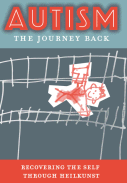

|
FREE Homeopathy at Home, Work and Play downloadable basic study course »  
|
|
The Multi-dimensional World of Similarity:
The Hidden Treasures of the Extended Organon Presentation by Rudolf Verspoor International Conference on Homeopathy Montreal, Canada, August 1997 
I would like to first thank the organisers of this conference for having invited me and for having provided the opportunity today to share with you some of my recent insights into Dr. Hahnemann's remarkable medical system. These insights are, unfortunately, not yet fully understood or appreciated. I have to admit that I am still learning about the incredible treasures found in Hahnemann's genial work myself. I have had the great fortune, however, to have been guided in my research and learning by the work of two remarkable persons. The first person is Dr. Elmiger of Switzerland who provided me with the clinical basis for tackling complex cases of disease more effectively on the basis of the law of similars. Dr. Elmiger's work derived from his own intuitive understanding of Hahnemann's writings. The second person is Steven Decker of Santa Barbara, California, who has provided the necessary theoretical grounding for the clinical work of Dr. Elmiger and others, such as Sankaran, through his groundbreaking translation of the Organon into English. His work provided the basis for the latest edition of the Organon in English, that by Wenda Brewster O'Reilly, but goes far beyond that in scope. I am also indebted to on-going discussions with Steven on various issues related to Hahnemann's writings. Through him I have come to realise how much we have lost of the richness of Hahnemann's thought from previous translations. The two fundamental insights that I wish to share with you today are:
What I am about to say may surprise many, but it is all thoroughly grounded in the rich legacy of Dr. Hahnemann, which I will call the Extended Organon der Heilkunst. I refer to the "Extended Organon" because the Organon encompasses the preface, Introduction and various other works refered specifically therein, such as Chronic Diseases, Essay on Cholera and Warning to Allopathy: A Word of Warning to All Sick Persons, etc. Dr. Hahnemann's complete medical system, which he termed "Heilkunst" (not homeopathy) is widely, but erroneously seen as based almost exclusively on a reading of symptoms. Cause is seldom considered to be important in the choice of remedy. However, cause is an integral part of Heilkunst. Right from the beginning, Hahnemann recognised that disease had a cause, but this was a dynamic one, not a material cause. Ailments from accidents and dietary errors were the most obvious. However, the other causes of disease were less easily discovered. It was not always possible to determine what disease agent had led to the mis-tunement of the life force. Hahnemann rightly criticised allopathic medicine for its belief that disease was material in nature and that the cause was, therefore, also material. This led to the error, still current, that the physical changes in the organism were also the cause of the disease. Thus, if one had a malfunctioning thyroid, this was the cause of Grave's Disease. Since Grave's disease is defined as a malfunctioning thyroid leading to certain symptoms, this amounts to saying that the cause and the disease are one and the same thing, a logical impossibility! For Hahnemann, disease was a mistunement of the life force due to some agent or event that had the power to disrupt the normal energy pattern. Disease was dynamic (energetic) in nature. It always had a cause. The symptoms and signs of a patient were the result of the mistunement. Early on in his career as "Heilkünstler", that is, as someone who practices "Heilkunst", Dr. Hahnemann discovered that one could determine the curative medicine needed for a patient by matching the symptoms of the patient to the symptoms of a proving. The cause of the disease was not a critical issue here. Hahnemann achieved quite remarkable success in removing the symptoms of his patients by this method of symptom matching. He assumed that the disease had also, thereby, been removed. However, to his dismay, he discovered two things:
This lead him to a crisis of faith. Either the law of similars was valid or it was not. Hahnemann rejected the obvious answer that the problem was due to a lack of proved substances. The remedies had worked, brilliantly, but not deeply enough. There had to be some missing element. Out of this crisis came Hahnemann's chronic disease theory. Almost all diseases were now seen as due to an underlying, inherited predisposition related originally to an infectious condition, either in the person himself or one's ancestors. These inherited predispositions Hahnemann referred to as chronic miasms, as opposed to the acute infectious diseases of nature such as cholera, scarlet fever or chickenpox. The first predisposition or weakness was Psora, or "the itch diathesis", and the other two were Sycosis (the fig wart disease) and Syphilis (the chancre disease), so named because of their characteristic external disease expression in the primary phase. Later Hahnemann seems to have developed a new aspect of Psora, dividing it into Psora and Pseudo-psora (which we now recognize as Tuberculosis). This was reported by Hering in the Preface to Charles Hempel's translation of the Organon.( I have David Little to thank for drawing this to our attention). Thus, we have a functional (dynamic) relationship between pruritic miasms (non-venereal) and venereal. The pruritic miasms are divided into Psora and Pseudo-psora and the venereal into Syphilis and Sycosis. The idea of a prior susceptibility to chronic disease enhanced the notion of cause and time in Hahnemann's system of medicine. Hahnemann now referred to the treatment of non-chronic, acute natural diseases as "General Homeopathy". Hahnemann was led at the same time to realise the importance of certain stresses on the organism which could lead to a mistunement of the life force and, thus, create a blockage to cure. Here I would refer you to p. 113 of Chronic Diseases where he talks of "different degrees of injurious influence" such as "excessive hardships, labouring in swamps, great bodily injuries and wounds", "an unhappy marriage", "remorseful conscience", "change of fortune", "sudden death of a son", "a disappointment in love". He then talks of the need to remove such blockages, to proceed with a cure which is not "encumbered with such obstructions". Finally, Hahnemann's experience with the treatment iatrogenic disease, particularly in his Parisien period, added to his awareness of blockages to cure. Here, Hahnemann was less optimistic, based on his experience, of the chances of curing such cases. My experience, based on Dr. Elmiger's insights, provide room for more optimism. This is mainly due to the greater use of the particular relationship that Hahnemann uncovered between a remedy and the form of a disease. I will speak more of this later. Hahnemann now came increasingly to realise the need to take into account aspects of a case other than simply the symptoms of the patient. The Heilkünstler, that is, the practitioner of Hahnemann's Heilkunst, must also consider the signs (observations by Heilkünstler), the circumstances surrounding the case and the behaviour of the patient. Let's look briefly at what the Organon has to say on this. Aphorism 18 states that the remedy must be based on the "complex of all the symptoms and circumstances perceived in each individual case of disease" and that this symptom complex for each disease is the "only indicator, the only reference in choosing a remedy." In Aphorism 24, Hahnemann states that "a medicine is sought for the totality of [characteristic] symptoms of the disease case, with regard for the originating cause (when it is known) and for the accessory circumstances." What we have in Hahnemann is a multi-dimensional view of disease, consisting of various elements. When Hahnemann speaks of disease, he speaks variously of state, character, image, gestalt, complex and totality. State: this is determined by the prevailing false belief (§ 108, 211, 212) Character: §78, fn 1 - the unique nature of the disease, which can be constant or variable, as set out in the arrangement of signs and symptoms in time and space Image: §17 and 102 and 209 "To sketch the disease image of the sufferer as completely as possible" - which includes the signs and symptoms. Gestalt: §6 "signs, symptoms and occurrents" Complex: §18 "complex of all the symptoms and circumstances" Totality: §17 "the internal alteration of the life force which is lying at its base [its = the symptom complex] which is the disease itself." the whole disease in reality. Thus, it is clear that the medicine for each case of disease must take into account the various elements of the disease complex as appropraite: that is, the symptoms (felt and reported by the patient), the signs (visible to the physician), the circumstances and events (occasions) which are both static and kinetic respectively (shocks and infections), and behaviour (belief state). Miasms are the result of disease Wesen which come to one through circumstances but they are not precisely the circumstances. We can presume that in some cases, certain of these aspects or elements will be more important than others. We will see how this is the case in Hahnemann's Heilkunst. With his development of the theory of chronic disease, Hahnemann had placed cause and time (events over a period of time, including the inherited predisposition) more directly into consideration in case-taking and in the choice of remedy. If we read the Organon carefully from this perspective of time and cause, we will notice two things:
These insights are more clearly seen in the most recent translation in Wenda Brewster O'Reilly's edition of the Organon. I think that these different categories have been missed and misunderstood in the homeopathic literature. Let's first look at point #2 - the different disease categories:
The first three categories are the focus of Dr. Elmiger's work and the third category is the focus of Rajan Sankaran's work. Hahnemann's Heilkunst is based on the law of similars - Similibus Similia Curentur. So, at each level of disease we have a similarity, or more correctly, since we are dealing with a dynamic or functional duality between two forces (disease and medicine, for example) a resonance:
The term "homogenic" comes from Hahnemann himself. The other terms were not used specifically by him, but accurately express his categories. Let's take a look at what is meant by "homogenic". In the Organon, Hahnemann talks of "medicines which were homogenic in their action to the disease irritation" (Organon, p. 9). This has often been misunderstood or ignored. What Hahnemann is saying is that there is a specific relationship between a remedy and a disease based on their causal connection. He gives various examples throughout the extended Organon (including Chronic Diseases, Essay on Cholera, etc.). Pulsatilla for "sudden stomach-vitiation" (fn 8, Introduction), "contusion disease with Arnica", swamp fever with China bark" (?), Aconite for "the inflamed blood and the immaterial inflammatory irritation" (fn. 11, Introduction). Numerous other homogenic remedies can be found in Chronic Diseases, p. 131:
For each category or level of disease, the role and importance of symptoms, signs, circumstances and behaviour will vary. For each of the above categories, some modes of expression will be more crucial generally in the choice of remedy:
Symptoms are most important in acute, natural diseases. With the concept of time, of miasms, blockages to cure and allopathic drugging, Hahnemann was faced with the need to consider sequencing in treatment. Let's look at the proper sequence set out by Hahnemann for treatment of chronic disease (that is, other than true acute or surgical disease):
With each disease category, there clearly are different treatment modalities that apply. What we see is that disease for Hahnemann has become pleomorphic, occurring at different levels and over time. Each level operates on somewhat different principles although each is governed by similarity of sonation, of resonance (similia similibus curentur). It is much like the different levels in law. It is interesting that both lawyers and doctors deal with cases. Disease is like a crime {cf. Gebrechen [infirmity] and Verbrechen [delinquency]} that has been committed. There is a victim and there is a criminal. What we need to do in the case-taking is to gather all the pertinent facts from the victim and other witnesses. This is all clearly laid out in the Organon. Then we need to round up the usual suspects and interrogate them. But before we can prosecute the guilty, we need to determine who has jurisdiction and what the rules of the court are. Where it is a matter for international law, then the Court of Justice in the Hague has jurisdiction, not the City of Montreal. Where it is a provincial law that has been broken, the federal courts can not do anything and it would make little sense to seek an action there. So, let's examine the principles that apply to each disease category as Hahnemann laid them down directly and indirectly:
Layers theory was an approach that attempted to address the obvious complexity in each case that was not properly addressed by the more traditional approach, often called "classical homeopathy." However, layers theory is boxed in, as is classical homeopathy, by the failure to recognise that different principles of remedy selection apply at each level in Hahnemann's system of medicine. Traditional homeopathy simply treats the use of nosodes for circumstantial evidence (suspicion of measles in childhood or tuberculosis in a parent), or the use of specific remedies for injuries (Natrum sulphuricum for past head injuries or Natrum muriaticum for unresolved, past grief), as anomalies at best, or an embarrassment at worst. My clinical experience in the last 4-5 years has been to use different principles of remedy selection to remove the considerable blockages to cure created by drugs, injuries (both physical and psychical) and miasms. This has, in most case, resulted in dramatic improvements in health, particularly in complex cases which were not amenable to treatment with the traditional approach. The clinical evidence has confirmed the deeper meaning, wealth and complexity of Hahnemann's medical system as set out in the extended Organon (Organon, plus Chronic Diseases, Essay on Cholera, etc.). In this short time I have only been able to give you a brief sketch of the hidden richness of Hahnemann's genius, a richness obscured by a fundamental misunderstanding of the context of his thought by most of his followers, compounded by errors of translation. I hope that someday, the full story can be told. There is one final point that I wish to make before turning this over to my partner to illustrate with a case. Hahnemann made clear that there could be more than one disease existing in an organism at one time. It is also clear that Hahnemann used more than one remedy within a very short period of time. It is commonly taught that Hahnemann subsequently condemned the use of more than one remedy at a time. What Hahnemann did say was that there should be only one remedy used for a given disease. Since there can be more than one disease in a patient, there can be more than one remedy used. Clinical evidence has borne out the validity of this approach. Where a person has taken several drugs at a time, for example, there can be more than one disease engendered onto the life force. This requires several remedies, each having a relationship with a particular drug. In the case that you will see presented by Patty Smith, the validity of the principle of resonance and of the one remedy-one disease rule is confirmed. The rule of jurisdiction is also adhered too, with the attendant successful results. [ Back to Articles ] [ Top of page ] |